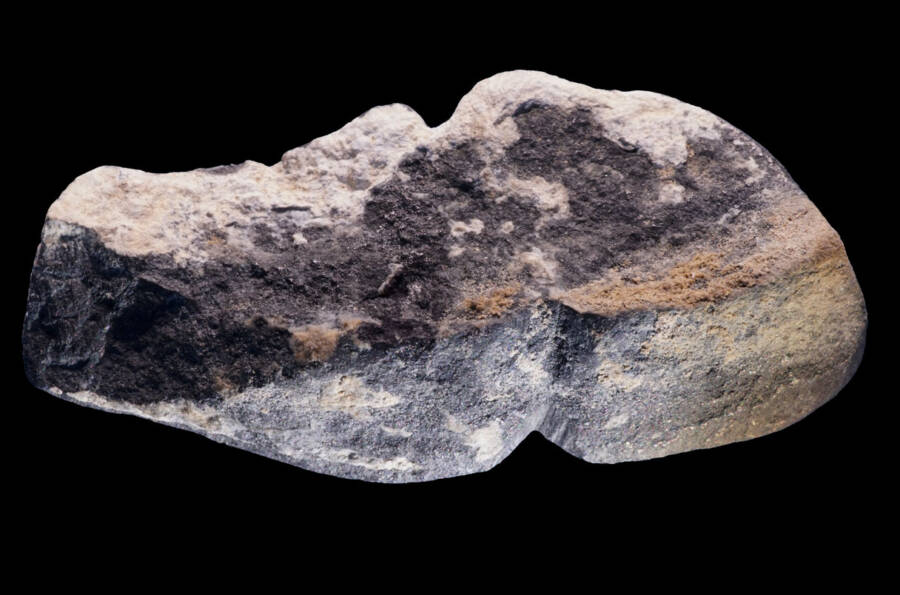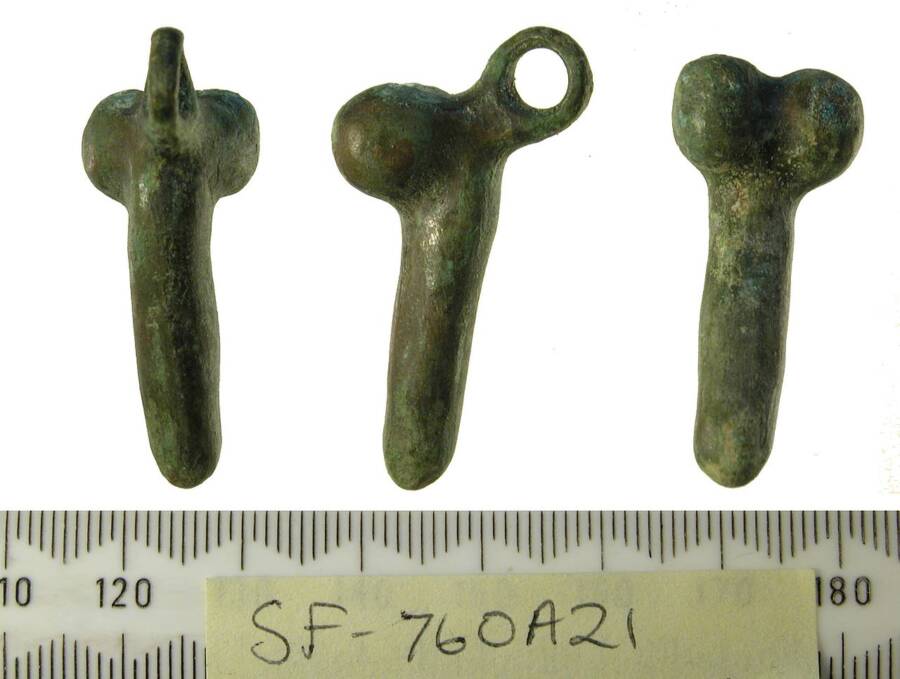The piece of graphite, likely once used as a pendant, was discovered in Mongolia and predates any other known artistic depiction of a phallus.
Solange Rigaud et al . This small objet d’art of black lead may be the oldest - known phallic fine art ever find .
At first glance , this chunk of graphite found among Mongolia ’s Khangai Mountains does n’t front like much . But archaeologists conceive that the 1.7 - in - long object is a sculpture of a genus Phallus and , at just about 42,000 age previous , the oldest - known priapic art ever discovered .
fit in to a recent study published inScientific Reports , careful detail carve onto the plumbago seem to place it as a phallus . The ancient artist appears to have taken care to cut up out a channel to make the urethra and to differentiate the glans from the prick . There ’s also a groove in the center of the graphite which suggests that the stone was once worn as a pendant .

Solange Rigaud et al.This small piece of graphite may be the oldest-known phallic art ever discovered.
“ Our disputation is that when you want to represent something abstractly , you will pick out very specific features that really characterize what you require to represent , ” Solange Rigaud , an archeologist at the University of Bordeaux and the study ’s lead writer , explained to theAmerican Association for the Advancement of Scienceof the graphite ’s seemingly purposeful markings .
Rigaud suspect that the pendant was an important self-will to whoever once possess it . The black lead itself came from over 60 miles away from where it was chance , and wear on one side of the stone suggests that someone often wore it around their cervix . Indeed , it ’s potential that the pendant was a treasured heirloom passed down through genesis .
So why was the pendant made ? And why was it break with such pride ?

Solange Rigaud et al.According to a recent study about the phallic pendant, its carver took care to include realistic details.
Solange Rigaud et al . allot to a recent study about the phallic pendant , its carver took care to include naturalistic item .
allot to Rigaud , the pendant ’s purpose is n’t obvious .
“ It ’s concentrated to know its exact routine , ” she toldLive Science . “ It ’s potential that this person get into a body ornament as a way to transmit information to others showing their group identity , or it held a personal meaning to the wearer . ”

The Portable Antiquities Scheme/ The Trustees of the British MuseumRoman phallic pendants found in Suffolk, England. For Romans, phallic imagery could symbolize good luck or protection from evil, among other things.
Phalluses have bet an important emblematic part in other , later culture . For Greeks and Romans , phallic imagery was meant to bring good luck , ward off evil , ensure fecundity , and intend abundance . Phallic imagery could be found on pendant like the Mongol graphite but also in frescoes and arial mosaic .
The Mongolian phallic pendant may have make for a similar use . But that ’s bear it ’s aphallusat all , and some researchers have dubiousness .
The Portable Antiquities Scheme/ The Trustees of the British MuseumRoman priapic pendants find in Suffolk , England . For Romans , phallic mental imagery could symbolize serious destiny or auspices from evil , among other things .
“ [ It ’s ] like a face in a cloud , ” Curtis Runnels , an archaeologist at Boston University who was not involve in the study , told the American Association for the Advancement of Science . He ring the Mongolian graphite carving a “ small and rather shapeless target . ” run read he “ would need to be win over ” that it ’s a phallic dependent .
But Francesco D’Errico , another archaeologist not involved in the subject field ( though he deal a lab with the study ’s researcher ) , believe that Rigaud ’s hypothesis about the plumbago carving is compelling .
“ The small sizing of the object , the exotic provenance of the raw material , and the … change are quite telling , ” D’Errico told the American Association for the Advancement of Science . “ I think the interpreting holds . ”
In the goal , the black lead sculpture may be the “ early - known sexed humanlike representation ” ever found , but it ’s not the oldest pendent that archeologist have uncovered . According toLive Science , other similar uncovering far outdate the graphite carving , as archaeologist have find body decoration made from animal teeth or shells that are around 130,000 to 150,000 class old in web site once inhabited by Neanderthals .
wear out some kind of accessory , it seems , is a story as former as time .
After reading about the possible priapic pendent found in Mongolia , which may be the oldest portraying of human genitalia ever found , see how archaeologists in Spain uncoveredone of the bombastic priapic sculpture known to man . Or , discover the tale of this 2,000 - yr - old wooden phallus which may be theoldest Roman sex toy ever set up .